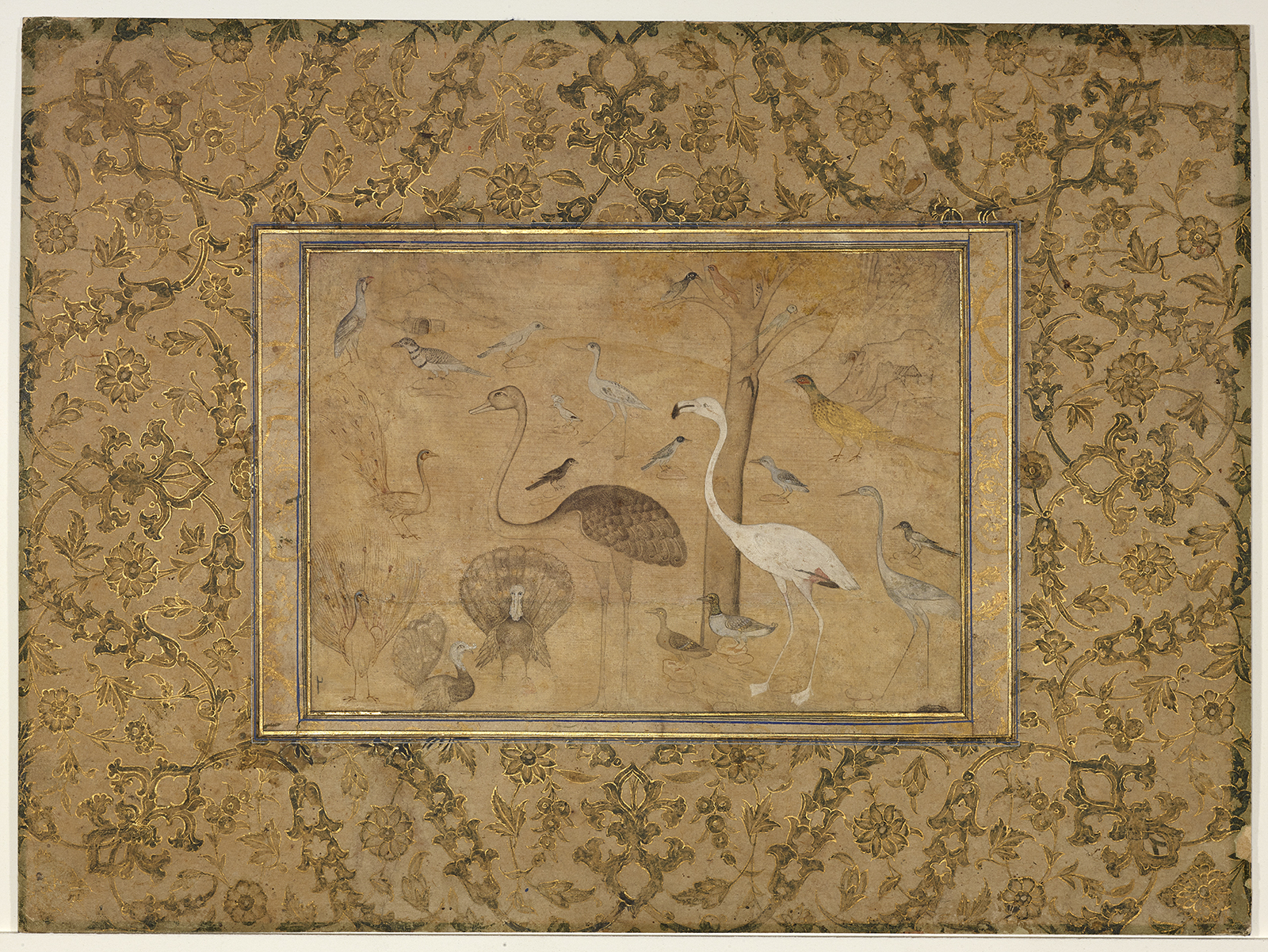Click on the image to zoom
Congregation of birds
- Accession Number:AKM213
- Creator:signed by Mani
- Place:India
- Dimensions:28.5 x 38.2 cm
- Date:ca. 1600
- Materials and Technique:Opaque watercolour and gold on paper
This single-page drawing shows the fondness of the Mughal emperor for natural scenes. A variety of more than 20 different large and small birds, including peacocks, a turkey, mallard ducks, an ostrich, and a flamingo are depicted in this tinted single-page drawing of a landscape with trees, hills, and small buildings that suggest a village. In the European Renaissance, animal drawings were often scientific representations of exotic animals, such as The Rhinoceros by Albrecht Dürer and The Elephant by Raphael, both of which were gifts to the pope. This tendency is also present in Mughal drawing and painting.
Further Reading
Some of the early Mughal illustrations of flora and fauna are found in the Babur-Nameh (Memoirs of Babur), a tome rich in illustrations of the world of birds. Only at a later time did nature studies become paintings and drawings independent from the text. The depictions of symbiosis emphasize the relationship between flora and fauna. The new freedom of thinking and designing at courtly Mughal workshops furthered the creativity of the artists. [1]
European painting techniques adopted by Mughal artists included deep shading, heavy modelling, and highlighting of contours and various parts of the body. [2] Frontal, three-quarter, and profile views show the attention that Mughal artists paid to accuracy in representing the bodies. On the top right, between the tree branches, is an inscription reading raqamahu Mani. According to this inscription, the drawing is the work of Mani, a Mughal artist active in the royal courtly workshop between 1580 and 1600 during the reign of Akbar the Great (1542–1605). Mani was a colourist in the workshop and contributed to many paintings. With this study of birds he demonstrated his superior draftsmanship skills.
— Filiz Çakır Phillip
Notes
[1] Almut von Gladiss, Albumblätter: Miniaturen aus den Sammlungen indo-islamischer Herrscherhöfe (Munich: Edition Minerva/Staatliche Museen zu Berlin [hrsg.], 2010), 20.
[2] Som Prakash Verma, “Portraits of Birds and Animals Under Jahangir,” Marg: A Magazine of the Arts 50, no. 3 (Mumbai: Marg Publications, 1999): 22.
References
von Gladiss, Almut. Albumblätter: Miniaturen aus den Sammlungen indo-islamischer Herrscherhöfe. Staatliche Museen zu Berlin (hrsg.). Munich: Edition Minerva, 2010. ISBN: 9783938832684
Phillip, Filiz Çakır. Enchanted lines: drawings from the Aga Khan Museum collection. 2014. ISBN: 9780991992874
Verma. Som Prakash. “Portraits of Birds and Animals Under Jahangir.” Marg: A Magazine of the Arts 50, no. 3 (1999): 12–24. ISBN: 8185026432
Note: This online resource is reviewed and updated on an ongoing basis. We are committed to improving this information and will revise and update knowledge about this object as it becomes available.


